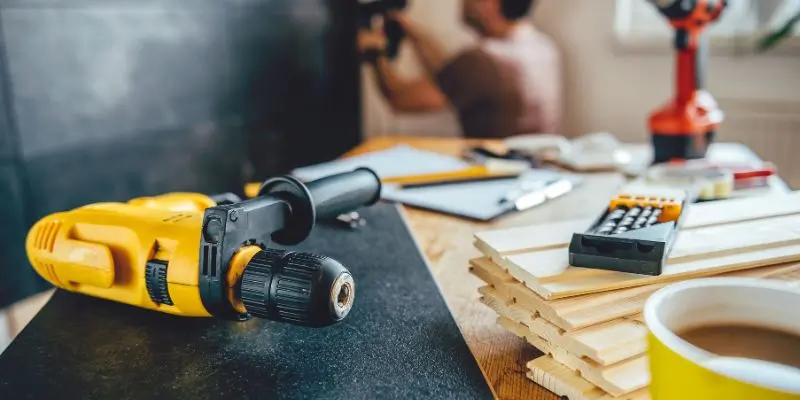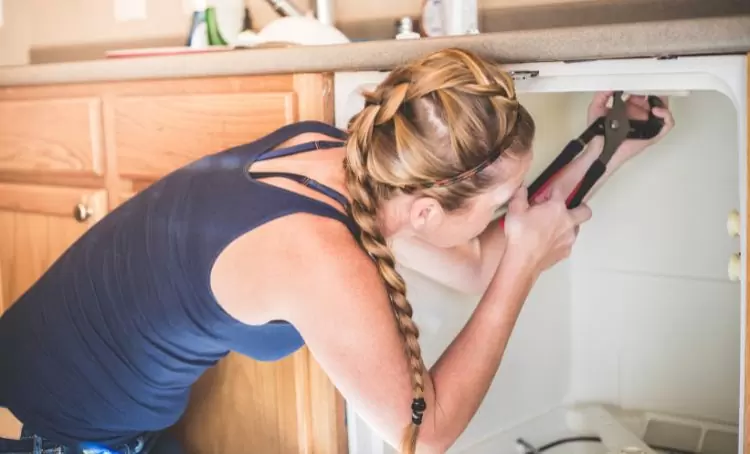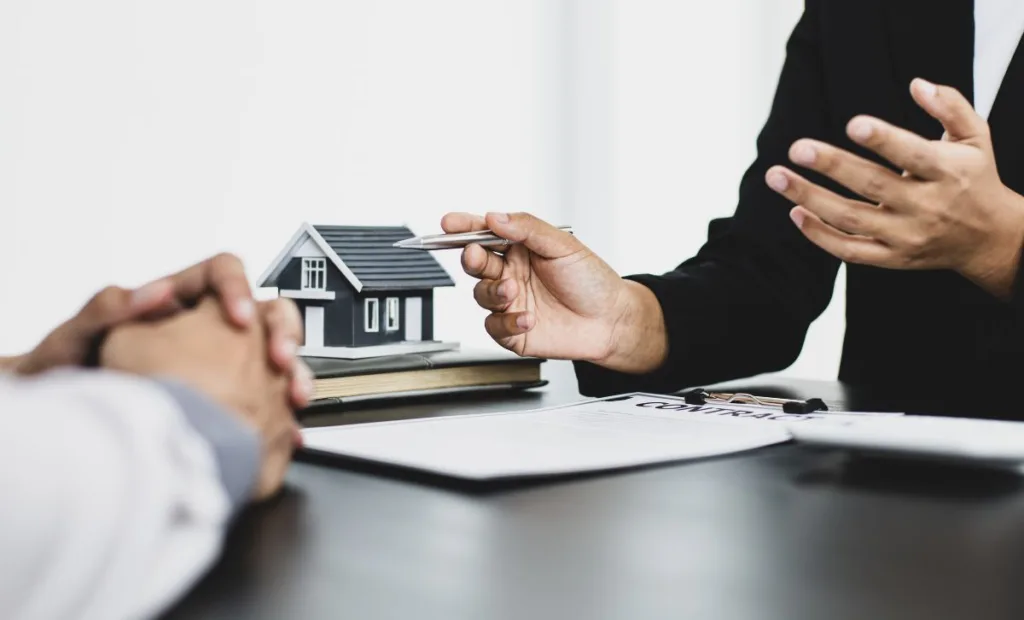Are you new to house flipping and don’t where to start? Here’s your House Flipping Guide for beginners!
What is house flipping for beginners?
House flipping is the process of buying a home, renovating it and then selling it for a profit. It is a popular form of real estate investing in which investors purchase properties with the intention of reselling them quickly for an increased value. House flippers often use various strategies to increase the property’s value such as making minor or major repairs, adding features like pools or decks, and cosmetic updates like painting and landscaping.
The goal of house flipping is to sell the property at a higher price than what was originally paid, making a profit in the process.
What is a fix and flip loan for beginners?

A fix and flip loan is a type of short-term loan that helps investors purchase properties, renovate them, and resell them for a profit. This type of loan can provide funding to buy the property and cover the cost of renovations.
Fix and flip loans are typically used by real estate investors who specialize in flipping houses. They are usually secured by the purchased property, which means the investor must put up the property as collateral for the loan.
What do beginners need to consider when house flipping?
There are a few things you should consider when house flipping:
Location
The location of the property is key to getting a good return on your investment. You want to make sure there is a high demand in the area and that it will keep its value over time.
The condition of the property
Before you buy a house, make sure to inspect it for any issues that could affect its value. Look for signs of water damage, mold, and other structural issues.
Renovations
When renovating a home make sure to factor in the cost of materials, labor, and the time needed to complete the project.
Financing
Getting a loan to finance your house flipping project is key. Make sure you understand the terms and conditions of the loan and how it will impact your return on investment.
Your budget
Before you start house flipping, make sure you have enough money to cover the cost of buying and renovating the property, as well as any other associated costs.
These are just a few things to consider when house flipping. With the right knowledge and preparation, you can make a successful profit from house flipping projects.
What is the real estate market for beginners?
The real estate market is a complex and ever-changing part of the economy, with numerous variables that affect the prices, availability, and types of properties for sale. In general, the real estate market has two main components: residential real estate and commercial real estate. Residential real estate includes single-family homes, townhouses, condominiums, multi-family dwellings (apartment buildings), and other dwellings. Commercial real estate includes office buildings, retail centers, industrial parks, and other commercial properties.
Real estate values fluctuate due to a variety of factors such as economic conditions, housing supply and demand, inflation, mortgage rates, and government policies. When making an investment in the real estate market, it is important to stay informed about these factors so you can make smart decisions when buying or selling a property.
When it comes to house flipping, there is no single formula for success. While some may swear by certain strategies, it’s important to remember that any successful endeavor depends on a willingness to experiment and learn. That said, there are a few basic principles that are essential for anyone looking to get started in the world of house flipping.
How long does it take to flip a house?

The length of time it takes to flip a house depends on numerous factors, such as the condition of the property, existing zoning restrictions, and market trends. Generally speaking, flipping a house can take anywhere from three months to a year or more.
The first step is typically acquiring the property. This includes researching potential properties for sale in the area, making an offer on a home that is within budget, and closing out the deal.
Once the property is acquired, the investor must assess the condition of the home and develop a plan for renovations. This can include replacing fixtures, updating appliances, and making cosmetic improvements. Then, they will need to obtain permits from the local government and find contractors to complete any necessary repairs.
How much does it cost to flip a house?
When it comes to house flipping, the cost of flipping a house depends on several factors, such as the condition of the property, the location, and whether you plan to do most of the work yourself or hire contractors. Generally speaking, it can cost anywhere from $20k to over $100k to flip a house.
In terms of materials and labor costs, you could end up spending around $5k to $20k, depending on the scope of the project. Other costs can include permits, inspections, real estate fees, insurance, and marketing.
Once the property is ready to be put on the market, it’s time to start marketing it. This could include creating a website, posting flyers, advertising online, and hosting open houses. The key here is to make sure that potential buyers are aware of the property so you can get the best return on your investment.
What are typical renovation costs to consider for a fix and flip property?
When considering the costs of renovating a fix and flip property, there are several factors to consider. First and foremost is the scope of the renovation project. Are you doing a light cosmetic update or a full-scale remodel? Once this is determined, it’s time to look at your budget and get an accurate estimate of what the project will cost.
Typical renovation costs for a fix and flip property can include:
- Materials: Cabinetry, flooring, paint, fixtures, appliances, etc.
- Labor: Contractors or specialized tradespeople
- Permits: Depending on the scope of the project and local laws
- Inspections: Structural inspections, HVAC inspections, plumbing inspections, etc.
- Real estate fees: Closing costs, taxes, etc.
- Insurance: Property insurance, liability insurance, etc.
- Marketing: Advertising the property for sale once it’s finished.
What are typical cost of repairs to consider for a fix and flip property?
When it comes to house flipping, the cost of repairs is one of the most important factors to consider. Fix and flip properties often require significant repairs in order to maximize profitability. Knowing what types of repairs are typical for a fix and flip property, as well as the associated costs, can help investors make informed decisions when selecting projects.
The most common types of repairs for fix and flip properties are:
Structural repairs:
This can include foundation repair, replacing rotted wood, and structural reinforcement.
Electrical repairs:
Updating wiring and fixtures, as well as installing new outlets.
Plumbing repairs:
Replacing fixtures, updating piping, fixing leaks, etc.
HVAC repairs:
Replacing outdated systems and installing new components.
Cosmetic repairs:
Replacing flooring, painting walls, and updating kitchen and bathroom fixtures.
The cost of these repairs can vary greatly depending on the scope of the project and the local labor market. Generally speaking, these types of repairs can cost anywhere from a few hundred dollars to several thousand dollars.
How to assess the neighborhoods of properties you would like to flip
When you’re looking to invest in a house flipping project, it’s important to not just consider the property itself, but also the neighborhood that surrounds it. Evaluating the area will give you an insight into what kind of potential return on your investment you can expect.
Here are some tips for assessing neighborhoods when searching for your next house flip:
1. Research Local Amenities:
When evaluating a neighborhood, take into consideration the types of amenities available. Are there schools and parks in the area? What about restaurants, grocery stores, and shopping centers? All of these can play an important role in determining the value of a property.
2. Check Out the Local Market:
You’ll also want to do research on the local real estate market. What kind of prices are properties going for? What is the average days on market? Are properties being sold quickly or are they sitting on the market for a long time? This information can give you a better understanding of the area and help you assess whether it’s worth investing in.
3. Get to Know the Neighborhood:
One of the best ways to get an idea of what kind of potential return you can expect is by getting to know the neighborhood. Drive around and talk to people who live nearby. Talk to real estate agents in the area, too, as they can provide valuable insights into local market trends.
By doing your research and evaluating both the property itself and its surrounding neighborhood, you’ll have a better idea of whether you should invest in a house flipping project. Investing wisely is key for any successful fix and flip project.
What the traits of a desirable neighborhood?
When it comes to house flipping, the neighborhood is an important factor to consider. A desirable neighborhood should have several positive traits.
1. Proximity to amenities:
A desirable neighborhood should be close to amenities such as shops, restaurants, entertainment venues, schools, and other services. This makes it easier for potential buyers to access basic needs without having to travel too far.
2. Safety and security:
When assessing a neighborhood, safety and security are key components. Look into the crime rate in the area, as well as the presence of any local police or security patrols. Potential buyers will be more likely to invest if they feel safe in their new home.
3. Accessibility:
The neighborhood should be easily accessible by public transportation or roads, allowing potential buyers to commute with ease.
4. Attractive features:
Attractive features such as parks, bike trails, and other recreational activities can add value to a neighborhood and make it more desirable.
What’s the ideal purchase price for a fix and flip property?
When considering a fix and flip property, the ideal purchase price should be below market value. This will allow for plenty of room to cover renovation costs and still make a profit when it’s time to sell.
To determine an appropriate purchase price, you’ll need to research comparable properties in the area to see what similar houses are selling for. Pay close attention to features such as square footage, number of bedrooms and bathrooms, and the condition of the property.
When researching comparable properties, you’ll also want to factor in repair costs. This will allow you to get an accurate estimate of how much money you can expect to spend on renovations as well as the potential return on your investment.
Finally, it’s important to remember that no matter how much research you do, there is always a certain amount of risk involved in house flipping. Be sure to factor this into your purchase price and budget accordingly.
How to gauge property values for house flipping for beginners
House flipping can be a lucrative venture, but only if you accurately gauge the property values before investing. Knowing how much a property is worth can help you make informed decisions on when to buy and how much to invest in renovations. Here are some tips for gauging property values when house flipping:
1. Start with Comparable Properties:
Look at comparable properties in the area and compare their list prices and features. Consider the size, condition, and age of the properties. This will give you an idea of what a similar property is worth in the local market.
2. Do an Appraisal:
Have a professional appraiser come out to the property and provide an assessment of its value. The appraisal should take into account factors such as nearby amenities, comparable sales in the area, and the condition of the home.
3. Consult a Real Estate Agent:
A real estate agent can provide insight into current market trends and provide an accurate assessment of the property’s value.
How much profit should I expect to make on a fix and flip property?
When it comes to making money in house flipping, the amount of profit you can expect to make on a fix and flip property largely depends on the condition of the property, location, market conditions, and any repairs or renovations needed.
Generally speaking, most experienced house flippers aim for a gross profit margin of at least 10-15%. This means that if you purchase a fix and flip property for $100,000 and spend $20,000 on repairs and renovations, your expected gross profit should be at least $10,000 to $15,000.
How to make maximum profit from a house flip

House flipping is an exciting venture with potential for high returns, but it can also be stressful and risky if done incorrectly. To maximize profits from a house flip, there are several key steps to take.
First, research the housing market in the area where you plan to buy and resell property. Understanding local trends in home values and rental rates will help you know how much to pay for a property and how much to charge when you sell.
Second, budget carefully for repairs and renovations. Be sure to include estimates for both the cost of materials and labor in your budget. It’s also important to plan ahead for unexpected costs.
Finally, make sure you understand the tax implications of house flipping. Capital gains taxes can have a significant impact on your profits, so be sure to consult a tax professional before investing.
How do I obtain financing for my flip project?
When it comes to financing a house flip project, there are a few different options available to you. The most popular option is to obtain short-term financing through a loan or line of credit. This type of loan is typically secured by the property you’re flipping, and can be obtained from banks, private lenders, or hard money lenders.
Another popular option is to use equity from your own home to finance the purchase and renovation of a fix and flip property. This is typically referred to as a “cash-out refinance” loan, and can be a great way to access the funds you need for your flip project without having to take on too much debt.
No matter which financing option you choose, it’s important to make sure you have a solid plan in place to ensure that you can pay back the loan on time.
What types of lenders are there for fix and flip projects?
When it comes to financing a fix and flip project, there are several types of lenders available to provide the necessary funds. The most common type of lender is a traditional bank or mortgage lender. These lenders typically offer competitive rates and can often provide financing for up to 80% of the purchase price. Another option is a private money lender, which is an individual investor who provides short-term loans secured by the property being flipped.
Private money lenders usually charge higher interest rates than banks or mortgage lenders, but they are willing to take on more risk and can often provide financing quickly.
Finally, hard money lenders are another option for financing a fix and flip project. These are typically wealthy individuals or companies who offer short-term loans secured by the property being flipped. Hard money lenders typically offer higher interest rates and charge high fees, but they can provide quick funding and are often willing to take on more risk than traditional lenders.
What does the flipping process look like for beginners?

The house flipping process can be broken down into a few key steps that need to be taken in order for it to be successful. Here is a brief overview of the process:
1. Finding the right property:
This involves researching potential properties, negotiating with sellers, and analyzing any potential repairs or updates.
2. Securing financing:
Flippers must secure a loan or other type of financing in order to purchase the property.
3. Making repairs and renovations:
This involves making any necessary repairs or updates to the property in order to increase its value before resale.
4. Selling the property:
Flippers must then market and sell the property at a profit.
Following these steps can help ensure that your house flipping venture is successful.
What does a profitable flip look like?
A profitable flip is a house that has been purchased, renovated, and resold for a profit. The goal of any house flip is to make money on the sale of the property. To do so, it’s important to understand what factors will result in a successful investment.
When evaluating potential flips, be sure to consider all costs associated with the purchase and renovation of the property, as well as any taxes or fees. It’s also important to consider the current market conditions to make sure you’re not overpaying for the property, and to research comparable properties in the area to get a better idea of what price range buyers will be willing to pay.
By taking the time to understand these factors, you can increase your chances of finding a successful flip and making a profit.
What are the most difficult tasks in the house flipping process for beginners?
House flipping is a great way to make money and can be a rewarding experience for those who are willing to put in the hard work. However, it’s not without its challenges, and there are some tasks that can be particularly difficult. Here are some of the most difficult tasks in the house flipping process:
1. Finding the Right Property
One of the most difficult parts of house flipping is finding the right property. It takes research and patience to find a property that is in good condition and will yield a hefty profit.
2. Securing Financing
Securing financing for a fix and flip project can also be difficult. Traditional lenders often require extensive documentation, which can make the process lengthy and complex.
3. Managing Repairs & Renovations
Flippers must also take the time to manage and oversee the repair and renovation process. This can be difficult, as there are many details to consider.
What are the traits of an experienced flipper?
An experienced flipper is someone who has been involved in the house flipping process for a long period of time, typically having completed several successful projects. They are usually well-versed in the different aspects of flipping houses and have developed a keen eye for finding good deals and making wise investments.
They also have an understanding of local real estate markets, zoning laws, and other important factors to consider when investing in real estate. Additionally, experienced flippers have the ability to negotiate effectively with sellers and lenders, and have developed strong relationships within the industry.
What does it take to be a full time flipper?

Anyone who wants to become a full-time house flipper needs to have certain skills and attributes. First and foremost, it takes dedication and hard work. Flipping houses can be a lucrative business venture but it is also a risky one. It takes focus, commitment, and an understanding of the real estate market to make the most of any investment.
In addition to having dedication and hard work, it is important to have a good sense of business and an understanding of the real estate market. A full-time flipper should also be well acquainted with the local laws and zoning regulations, as well as have strong negotiation and networking skills. Finally, having a good network of contacts in the real estate industry can go a long way when it comes to finding great deals.
What are property taxes?
Property taxes are a tax levied by local governments on real estate. Generally, the amount of property tax that is due is based on the assessed value of the property, and the local government’s mill rate. Mill rates vary depending on the jurisdiction, and can range from 0.01 to several mills per dollar. Property taxes can be paid in one lump sum or in installments over time, depending on the jurisdiction.
What does curb appeal mean?
Curb appeal is a term used to describe the attractiveness of a house from the street, or from “curb.” Curb appeal is important when it comes to potential buyers or tenants, as it can be a major factor in whether they choose to visit and explore the inside of the home.
What are common house flipping mistakes beginners should avoid?
House flipping can be a great way to make money, but it’s important to take the time to become educated and avoid common mistakes. Here are some of the most common house flipping mistakes you should avoid:
1. Not creating a budget
Before you start house flipping, you need to have an understanding of your budget and what kind of renovations you can do with it. Without a budget, you may end up overspending and not making a profit.
2. Not researching the market.
Before investing in property, it’s important to do your research and understand the local real estate market. You need to know what kind of properties are selling quickly and for what price.
3. Underestimating the time involved.
House flipping takes time, and it’s important to factor in the amount of time it will take to complete renovations, get permits, and find buyers.
4. Not getting a professional inspection.
A professional inspection is essential when flipping a house, as it can help you uncover any potential problems or issues with the property that could cost you time and money down the road.






